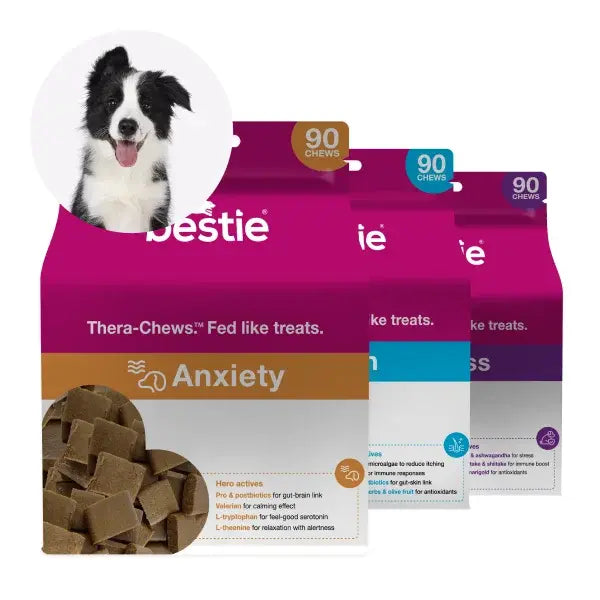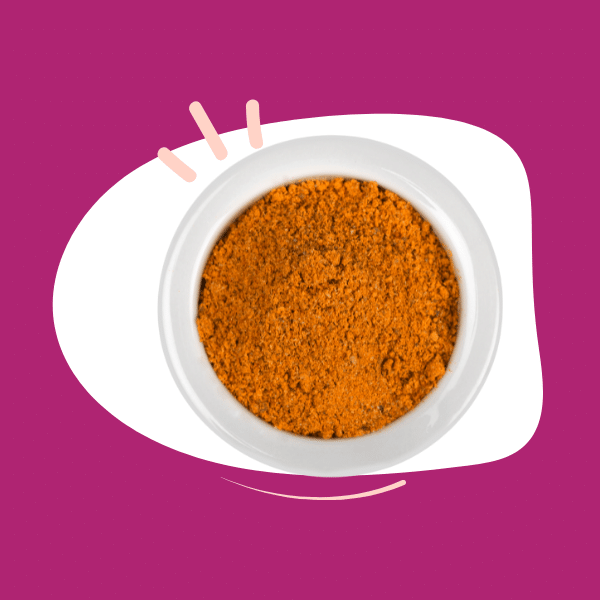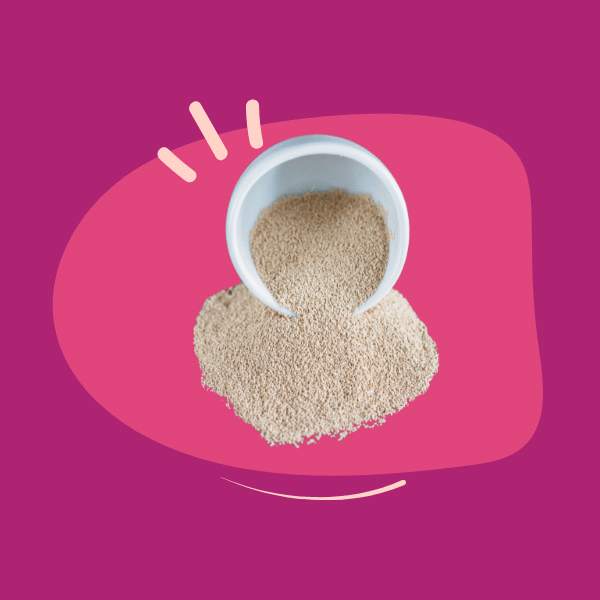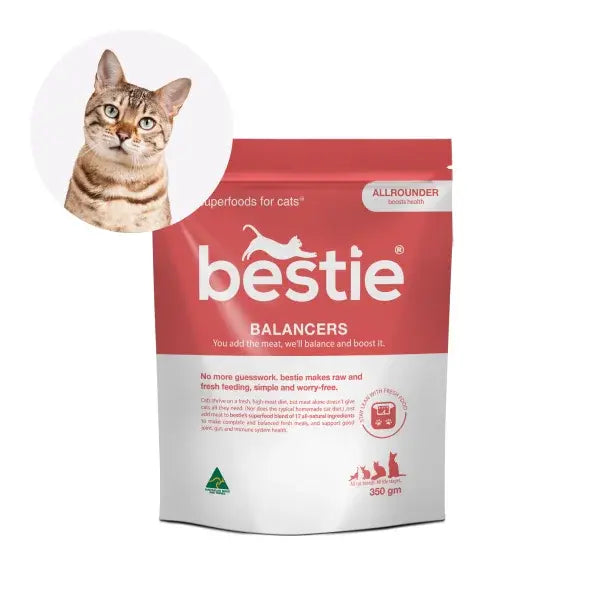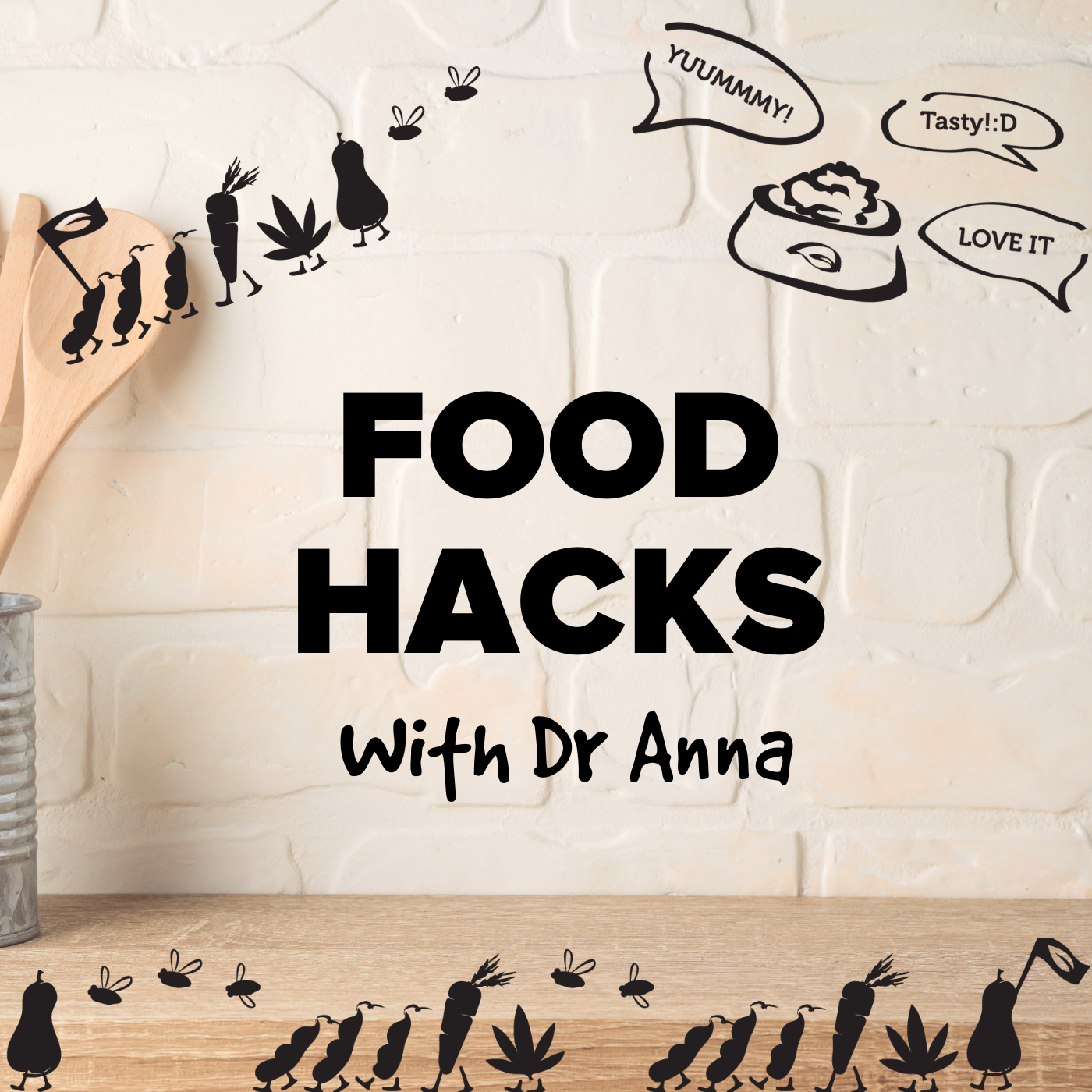Do a quick search for 'homemade dog food’, and you'll get back a raft of recipes. However, while well-intentioned, many of these recipes just won’t give your dogs what they need.

After all, just because you love your dog like one of your family, doesn’t mean you should feed them exactlywhat you feed yourself. I mean, we’re human and they’re dogs, and their nutritional requirements are a little bit different…
I should make a quick disclosure here: I am passionately pro feeding dogs fresh, homemade food, so don’t for a second take this as an attack on making food for dogs at home. However, I’m also passionate about making sure that the food we make is complete and balanced. (If you want to read more about my stance on things, go here.)
I also want to make a couple of other points. Firstly, dog food is BIG, BIG business. That means there are some very powerful forces actively working against the idea that dog owners can and should be responsible for their dog’s nutrition. (They’ve been working on that line since the 60s, believe it or not! We cover more about that in our post What should a dog eat?)
Secondly, the minimum recommended nutritional requirements as set out by AAFCO (The Association of American Feed Control Officials) and the FEDIAF, the trade body representing the European pet food industry are not universally accepted. A number of people believe they’re skewed to the large manufacturers (they are) and dry, extruded food (also probably true).
However, as a ‘boutique’ dog food manufacturer (of the kind often pilloried by those ‘powerful forces’ I mentioned earlier), I believe the best approach is to meet the standard the big guys follow, and exceed it where needed.
This is important, because any discussion about the gaps in homemade diets needs to have a reference point. The reference point that I and other researchers accept is AAFCO.
Right, on to the round up!
Resource 1

Bruce Dwyer gives a good overview of the vitamin & mineral deficiencies on a raw meat diet. In essence, he says that if you’re feeding a diet of predominantly raw meat and offal, then the diet will exceed most of the minimum requirements without exceeding the maximum limits. The problem areas – or deficiencies - are likely to be:
- Chloride (available through common salt)
- Manganese and iodine, added as a supplement.
- Vitamin D, addressed by Omega 3 (fish oil).
- Vitamins A and E, added as supplements.
He also points out that calcium and phosphorus are the nutrients with the tightest tolerance; and that it’s not just the amounts of each but the ratio of one to the other. He believes that the ratio issue seems to be addressed by a “fairly close watching of how much easily edible bone is supplied to your dog”.
Resource 2
Whole Dog Journals article on How to Make Your Own Dog Food, says a homemade dog food diet isn’t hard to design [not sure I agree 100% with that] but that it does take planning.

They also state that:
- Unless you’re feeding bones, all homemade diets must be supplemented with calcium
- Oils should be added, like fish oil for fatty acids, or cod liver oil for fatty acids and vitamins A & D
- Homemade diets are typically short on Vitamin E – added as a supplement
Resource 3
The author of the Whole Dog Journal article is Mary Straus, who’s also written a very detailed article, Dishing on Diets: Study Evaluates Homemade Diet Recipes for Dogs, about a piece of research we’ve also read, Evaluation of recipes of home-prepared maintenance diets for dogs.

She points out the ‘entrenched interest’ angle I mentioned above, but also goes on to say that:
“Most home-prepared dog food recipes (in books and online) are incomplete, many seriously so. Instructions are often so vague that it’s impossible to determine a recipe’s nutrient content.”
Quoting from the study, which reviewed 200 recipes (133 from two veterinary textbooks, and 9 pet care books, and 67 from 23 websites) she says that:
- 61% of recipes were low in vitamin D, and 95% of those provided less than half the NRC recommended amount.
- Zinc, copper, choline, and EPA/DHA were also short in more than half the recipes. Of those that were deficient, 55% had less than half the recommended amount of zinc, 43% had less than half the recommended amount of choline, and 39% had less than half the recommended amount of vitamin E. In other words, those recipes were significantly deficient in these nutrients, not just a little bit short.
- 35% of the recipes were short on calcium
- Vitamins B1 (thiamin), B2 (riboflavin), and B5 (pantothenate) were short in 14.5, 40.5 and 27% of recipes
- And just over one-third of recipes were found to be short on selenium
Resource 4
Another study, analysed 106 home-prepared diets for dogs and cats published in Portuguese.

It found the following deficiencies:
- 3% of recipes in iron
- 9% in vitamin E
- 6% in zinc
- 2% in calcium
- 4% in copper
- 4% in choline
- 8% in riboflavin
- 61% in B12
The study also stated that about 71% of the recipes didn’t prescribe the amount to be fed, and “this fact may lead to an excess or deficient intake of nutrients and energy, despite the diet being nutritionally adequate”.
The researchers also noted that there was generally a lack of precision in recipe description: “A large proportion of diets do not describe objectively the exact amount of each ingredient to be fed.”
Resource 5
Finally, another study evaluated the nutritional adequacy of 49 maintenance and 36 growth-stage homemade diets for dogs. Researchers found that:
- 86% of diets contained insufficient minerals
- 55% contained insufficient protein
- 62% contained insufficient vitamins
What can we conclude about homemade food for dogs?
Well the first thing is that homemade dog foo diets are often unbalanced and incomplete – at least as compared to the standards that exist for commercial dog food. So just grabbing any old recipe off the internet is unlikely to cut it, nor is just feeding your dog what sounds yum to you.
However, if all of this talk about vitamins and minerals and ratios between them, leaves you thinking, ‘OMG, this is all far too complex’, that’s NOT the conclusion I’d like you to draw.
In this, I’m aligned with Mary Straus, who I referred to in Resource 3. She writes that:
“I’ve often said that you don’t need a degree in nutrition to feed your dog a homemade diet; if we can feed ourselves and our children, we should be able to feed our pets as well. That said, dogs have unique nutritional needs that vary from human requirements…”
I believe we can, too. Now while there’s no doubt that you could use the resources above, and others, to make complete and balanced meals at home, I suggest a different approach.
Shameless plug – but I did this for a reason!
I like things to be simple BUT I also like to do things right. And this is why I spent 6 months working with a top animal nutritionistto develop a whole-food, dietary supplement that adds the things that are missing, when you primarily feed your dogs meat. (As I believe you should, based on all I understand about their nutritional requirements.)

In addition, because I also wanted precision in instructions and quantities, I went ahead and developed a simple, free app, that works out the right quantities – across different proteins. (And more on why that’s necessary in another post.)

Both the bestie supplement and the app, make my dogs’ meals complete and balanced, in about 60 seconds or less. Just the way I, and they, like it!



